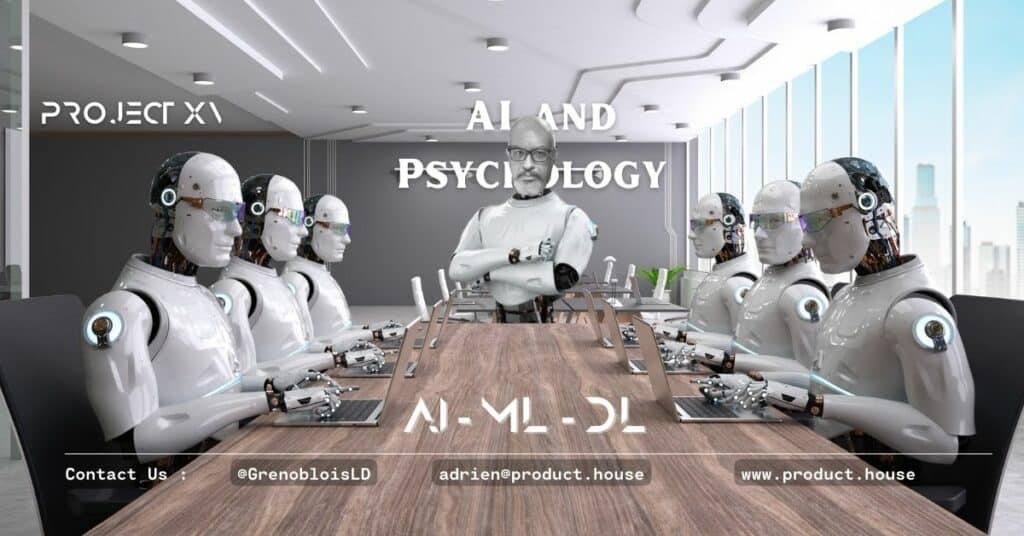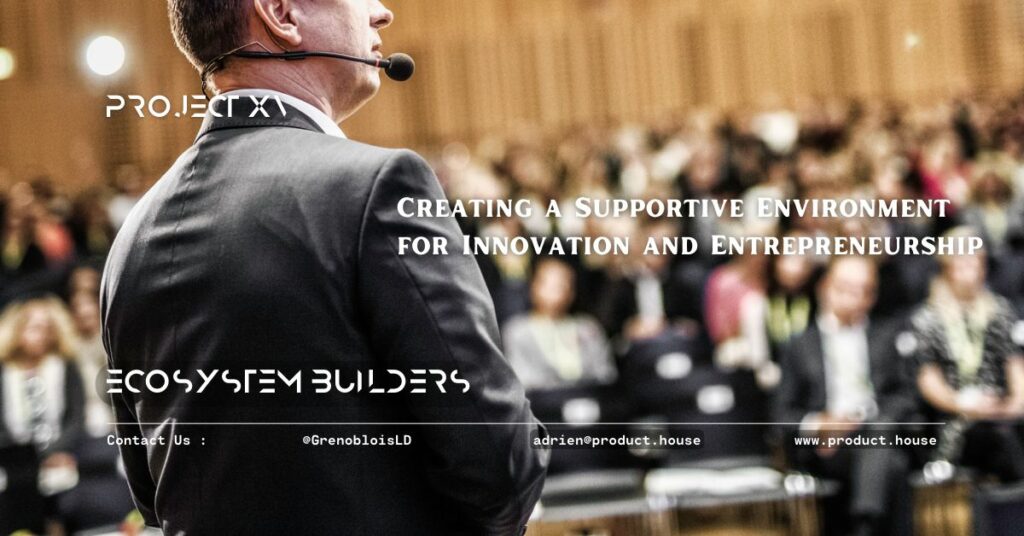The Ultimate Gamification Vocabulary: 100 Key Words and Concepts to Enhance Learning and Engagement
Here is a list of 100 Gamification and Gamification related topics, words and their respective definition:
| # | Name | Definition |
|---|---|---|
| 1 | Affordances | The perceived opportunities and limitations that a learning environment or tool provides to learners. |
| 2 | Affective computing | The study and development of technologies that can detect and respond to learners’ emotions. |
| 3 | Agile development | A software development approach that emphasizes flexibility, collaboration, and continuous improvement. |
| 4 | Artificial intelligence | The study and development of technologies that can simulate human intelligence and behavior. |
| 5 | Autonomy | The sense of control and freedom that learners have over their learning activities. |
| 6 | Badge | A digital icon or emblem that learners receive for completing a learning activity. |
| 7 | Behaviorism | A psychological theory that emphasizes the role of environmental stimuli in shaping learners’ behavior. |
| 8 | Chatbots | Software programs that can simulate conversation with learners, providing support and guidance. |
| 9 | Cognitivism | A psychological theory that emphasizes the role of mental processes, such as attention, memory, and problem-solving, in learning. |
| 10 | Competence | The sense of mastery and achievement that learners have when they successfully complete learning activities. |
| # | Name | Definition |
|---|---|---|
| 11 | Constructivism | A psychological theory that emphasizes the role of learners’ active construction of knowledge through interactions with their environment. |
| 12 | Contextual learning | Learning activities that are designed to be relevant and applicable to learners’ real-life contexts and situations. |
| 13 | Drip content | The process of delivering learning content in small, regular doses to enhance learners’ engagement and retention. |
| 14 | Embodied learning | Learning activities that incorporate physical movements and gestures to enhance learners’ understanding and retention. |
| 15 | Engagement | The level of involvement, attention, and enthusiasm that learners have for a learning activity. |
| 16 | Engagement loops | The process of creating a cycle of engagement, motivation, and satisfaction in a learning activity through game mechanics and dynamics. |
| 17 | Extrinsic motivation | Motivation that comes from external rewards, such as points, badges, and leaderboards. |
| 18 | Feedback | Information provided to learners about their performance and progress towards learning outcomes. |
| 19 | Flow | The state of being fully engaged and absorbed in a learning activity, where learners lose track of time and surroundings. |
| 20 | Game dynamics | The emotional and psychological experiences that a game creates, such as challenge, reward, and feedback. |
| # | Name | Definition |
|---|---|---|
| 21 | Game mechanics | The rules, procedures, and systems that define how a game is played, such as points, levels, and rewards. |
| 22 | Gameful mindset | A positive attitude and approach towards learning that incorporates game mechanics and dynamics. |
| 23 | Gamification | The process of applying game mechanics and dynamics to non-game contexts, such as learning activities, to enhance motivation and engagement. |
| 24 | Gamification platform | A software platform that provides gamification features and tools for learning activities. |
| 25 | Humanism | A psychological theory that emphasizes the role of learners’ subjective experiences and emotions in learning. |
| 26 | Immersion | The quality of being fully engaged and absorbed in a learning activity. |
| 27 | Leaderboard | A scoreboard that displays the performance and rankings of learners in a learning activity. |
| 28 | Learning analytics | The process of collecting and analyzing learners’ data to improve learning outcomes. |
| 29 | Learning community | A group of learners who share common interests, goals, and learning experiences. |
| 30 | Learning journey | The sequence of learning activities that learners undertake to achieve specific learning outcomes. |
| # | Name | Definition |
|---|---|---|
| 31 | Learning management system (LMS) | A software platform that facilitates the delivery, management, and evaluation of learning activities. |
| 32 | Learning objectives | The specific, measurable, and achievable goals that learners need to achieve through a learning activity. |
| 33 | Learning pathway | The customized sequence of learning activities that learners undertake based on their needs, preferences, and learning goals. |
| 34 | Learning styles | The ways in which learners prefer to learn, such as visual, auditory, or kinesthetic. |
| 35 | Mastery | The process of achieving a high level of skill and knowledge in a learning domain. |
| 36 | Narrative transportation | The process of being fully immersed and engaged in a story or scenario in a learning activity. |
| 37 | Pedagogy | The theory and practice of teaching and learning. |
| 38 | Points | A form of extrinsic motivation in which learners earn points for completing learning activities. |
| 39 | Positive psychology | The study and application of positive emotions, behaviors, and experiences to enhance well-being and achievement. |
| 40 | Problem-based learning | A learning approach that emphasizes the use of real-world problems and challenges to develop learners’ problem-solving skills and knowledge. |
| # | Name | Definition |
|---|---|---|
| 41 | Progression | The process of advancing through levels or stages in a learning activity. |
| 42 | Quest | A learning activity that involves learners in a series of challenges and tasks to achieve a goal. |
| 43 | Reinforcement | The process of strengthening learners’ behavior through positive or negative consequences. |
| 44 | Retention | The process of retaining and recalling information and skills over time. |
| 45 | Scaffolding | The process of providing learners with support and guidance to facilitate their learning. |
| 46 | Scenario-based learning | Learning activities that simulate real-world situations and challenges to enhance learners’ application and transfer of knowledge. |
| 47 | Serious play | A learning approach that uses play and games to achieve serious learning outcomes. |
| 48 | Skill-building | The process of developing and improving specific skills through learning activities. |
| 49 | Social learning | The process of learning through interactions with others, such as peers, mentors, and experts. |
| 50 | Storytelling | The use of stories, narratives, and scenarios to engage learners and convey information and knowledge. |
| # | Name | Definition |
|---|---|---|
| 51 | Successive approximation | A learning approach that involves breaking down complex skills or behaviors into smaller, more manageable steps and gradually building up to the desired outcome. |
| 52 | Surprise | The use of unexpected events or elements in a learning activity to enhance learners’ engagement and motivation. |
| 53 | Task analysis | The process of breaking down complex tasks into smaller, manageable steps for learners. |
| 54 | Transmedia storytelling | The use of multiple media and platforms, such as text, images, videos, and games, to tell a story and engage learners. |
| 55 | User-centered design | A design approach that emphasizes the needs, preferences, and experiences of users. |
| 56 | Variable rewards | A form of extrinsic motivation in which learners receive rewards that vary in value or frequency to maintain their engagement and motivation. |
| 57 | Virtual instructor-led training | Learning activities that are delivered and accessed through virtual environments, with a live instructor. |
| 58 | Virtual reality | A technology that creates an immersive and interactive 3D environment that simulates real-life situations and experiences. |
| 59 | Visual design | The use of visual elements, such as colors, images, and typography, to enhance the aesthetics, usability, and effectiveness of learning materials and activities. |
| 60 | Zone of proximal development | The range of tasks or activities that learners can perform with the guidance and support of others, such as teachers or peers, to develop their skills and knowledge. |
| # | Name | Definition |
|---|---|---|
| 61 | Adaptive learning | Learning activities that are customized and personalized to meet the unique needs, preferences, and progress of individual learners. |
| 62 | Authentic learning | Learning activities that simulate real-world situations and challenges to enhance learners’ application and transfer of knowledge and skills. |
| 63 | Badging | The process of awarding digital badges to learners for completing learning activities, achieving learning outcomes, or demonstrating skills and knowledge. |
| 64 | Challenge | Learning activities that involve learners in a difficult or complex task or problem to enhance their skills and knowledge. |
| 65 | Cognitive load | The amount of mental effort and capacity required to process and understand information and instructions in a learning activity. |
| 66 | Collaborative learning | Learning activities that involve learners working together in groups to achieve learning outcomes, share knowledge and skills, and provide feedback and support. |
| 67 | Deep learning | The process of acquiring and applying complex and abstract concepts and knowledge through active and self-directed learning. |
| 68 | Descriptive feedback | Feedback that provides specific and detailed information to learners about their strengths, weaknesses, and areas for improvement in a learning activity. |
| 69 | Edutainment | The use of entertainment and gamification elements to enhance learners’ engagement and motivation in a learning activity. |
| 70 | Episodic memory | The type of memory that involves the ability to recall specific events and experiences in a learning activity. |
| # | Name | Definition |
|---|---|---|
| 71 | Feedback loops | The process of creating a cycle of feedback and improvement in a learning activity through learners’ performance, reflection, and revision. |
| 72 | Flow theory | A psychological theory that explains the state of optimal experience in a learning activity, where learners are fully engaged, absorbed, and challenged. |
| 73 | Formative assessment | Assessment that provides learners with feedback and opportunities for improvement during a learning activity, rather than after it. |
| 74 | Game-based learning | A learning approach that uses games as the primary instructional method to achieve learning outcomes. |
| 75 | Goal setting | The process of defining specific and achievable goals for learners to achieve in a learning activity. |
| 76 | Immediate feedback | Feedback that is provided to learners in real-time, as they are engaged in a learning activity. |
| 77 | Incremental learning | Learning activities that involve small, continuous improvements in learners’ skills and knowledge over time. |
| 78 | Inquiry-based learning | A learning approach that emphasizes learners’ questions, curiosity, and exploration to develop their understanding and knowledge. |
| 79 | Intuitive design | Design that is easy to use and navigate for learners, without the need for extensive instructions or guidance. |
| 80 | Learning assessment | The process of evaluating and measuring learners’ performance, knowledge, and skills in a learning activity. |
| # | Name | Definition |
|---|---|---|
| 81 | Learning objective | The specific, measurable, and achievable goal that learners need to achieve through a learning activity. |
| 82 | Learning outcomes | The measurable and observable results of learning that demonstrate learners’ knowledge, skills, and abilities. |
| 83 | Learning path | The customized sequence of learning activities that learners undertake based on their needs, preferences, and learning goals. |
| 84 | Learning platform | A software platform that provides learners with access to learning resources, tools, and activities. |
| 85 | Mastery learning | A learning approach that emphasizes the acquisition of a high level of skill and knowledge in a specific domain before moving on to more advanced topics. |
| 86 | Microlearning | Learning activities that are short, focused, and targeted, and can be completed in a few minutes or less. |
| 87 | Motivation | The internal and external factors that drive and sustain learners’ engagement and persistence in a learning activity. |
| 88 | Onboarding | The process of orienting and familiarizing new learners with a learning platform, program, or environment. |
| 89 | Personalization | The process of customizing learning activities and resources to meet the unique needs, preferences, and interests of individual learners. |
| 90 | Playfulness | The use of playful and engaging elements in a learning activity, such as humor, storytelling, and game mechanics, to enhance learners’ motivation and engagement. |
| 91 | Reflection | The process of reviewing and analyzing learners’ experiences, thoughts, and feelings in a learning activity to gain insights and improve their performance and understanding. |
| 92 | Reinforcement | The process of strengthening learners’ behavior through positive or negative consequences, such as rewards or punishments. |
| 93 | Scaffolding | The process of providing learners with support and guidance to facilitate their learning and skill development, such as through prompts, hints, or examples. |
| 94 | Self-directed learning | A learning approach that emphasizes learners’ autonomy and responsibility for their own learning, such as through goal-setting, planning, and reflection. |
| 95 | Simulation | A learning activity that simulates real-world situations and challenges, such as through virtual environments, role-playing, or case studies, to enhance learners’ application and transfer of knowledge and skills. |
| 96 | Social presence | The sense of being present and connected with others in a learning environment, such as through communication, collaboration, and feedback. |
| 97 | Storytelling | The use of stories, narratives, and scenarios to engage learners and convey information and knowledge in a learning activity. |
| 98 | Transfer | The process of applying and adapting knowledge, skills, and strategies learned in one context to another, such as from a learning activity to a real-world situation. |
| 99 | User experience (UX) | The overall experience and satisfaction that learners have when using a learning platform, program, or resource, including factors such as usability, accessibility, and aesthetics. |
| 100 | Virtual classroom | A digital environment that simulates a traditional classroom, where learners and instructors can interact, communicate, and collaborate in real-time through various tools and features, such as video conferencing, chat, and whiteboard. |




